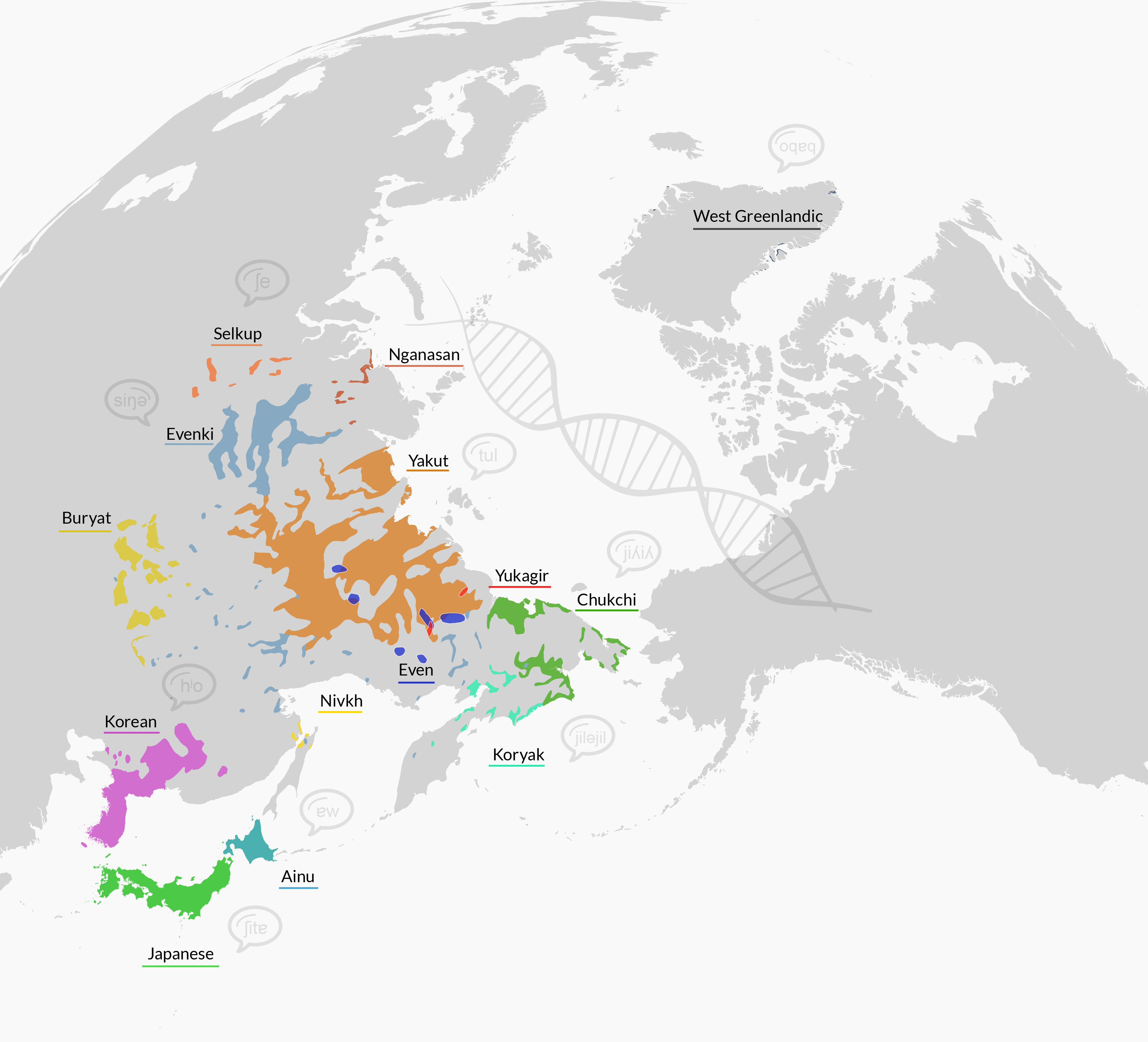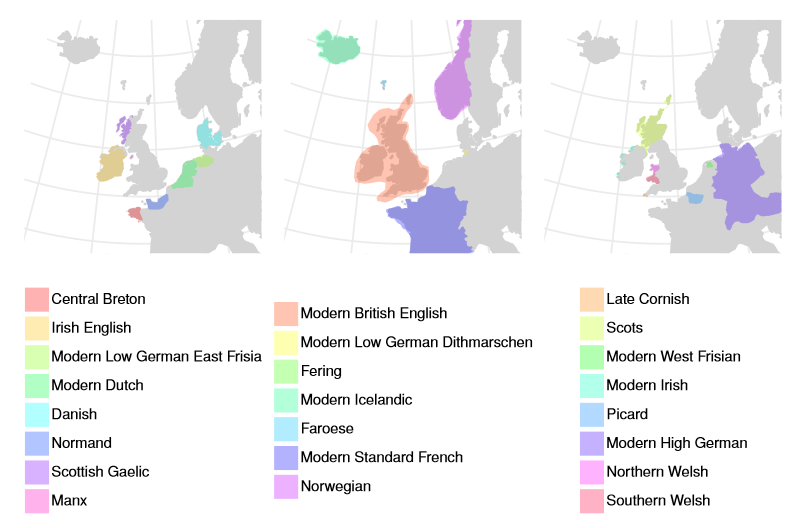Some of our latest findings - straight from the lab.

Peoples with similar genes also tend to have similar grammar, but not necessarily similar words or sounds.
Read publication or preprint

All humans are highly similar to each other, but they are not identical. Indeed, there are differences in genetic variation and culture, which is best illustrated in the more than 7000 languages currently spoken.
In theory, genes and culture evolve in a similar way from generation to generation with slight variations in each step. However, contact in the history of a population, be it friendly as in trade or unfriendly as in conquer, affects cultural and genetic variation differently. In a recent study, we explored the coevolution of genetic and cultural diversity in Northeast Asia, a region that has been the central crossroad in the prehistory of Asia and native America.
Our findings suggest that grammar, but not words, sounds or music, best resembles genetic similarities. Likely this is the case because grammar, similar to genes, tends to resist change through contact, while words, sounds and music do not. The study will appear in Science Advances.
Phylogenetic trees reflect how languages are related and when they split. Based on the tree and the present-day locations of languages, phylogeography attempts to reconstruct thousands of years of language evolution and infer the locations of ancestor languages in the past.
Phylogeography has been used to reconstruct the spread of several language families, for example, Arawak, Indo-European, Bantu (on the right), Pama-Nyungan, or Sino-Tibetan. Some of these results challenged existing hypotheses, which raises the obvious question: Is it possible to reconstruct the homeland of a language family from the location of current languages alone?
In a recent publication in Royal Society Open Science, we show that phylogeography fails to reconstruct human migration, for example when speakers leave their homeland due to conflicts with others. However, phylogeography works surprisingly well when languages expand gradually. We find that expansion leads to distinct phylogenetic patterns, which are absent when speakers migrate. We show, both in simulations and in an empirical case study, that these patterns are crucial for phylogeography to correctly infer the homeland of a language family.


Linguistic features are neither evenly nor randomly distributed in space. Instead, similar features tend to cluster. When new clusters emerge, this suggests new patterns of interaction: language speakers who previously used to mind their own business start to interact and exchange words, sounds, and concepts. Their languages become more similar. A linguistic area emerges.
We developed a Bayesian algorithm to track area formation in language data. We applied the algorithm to identify area formation processes in northwestern Europe. In a publication Language, we show that languages on the British Isles have converged from the early Middle Ages to the present, while they have diverged between the British Isles and mainland Europe. This substantial gain in linguistic similarity sets the languages of Britain and Ireland apart from languages spoken outside of Britain and Ireland and cross-cuts lines of linguistic ancestry. From a historical perspective, the emerging area can be related to a series of historical events that followed the Norman Conquest of England and increased the need for interaction between speakers of the languages in the area.